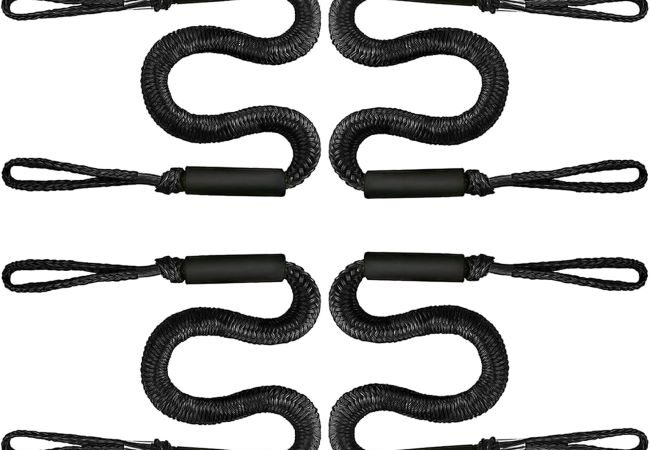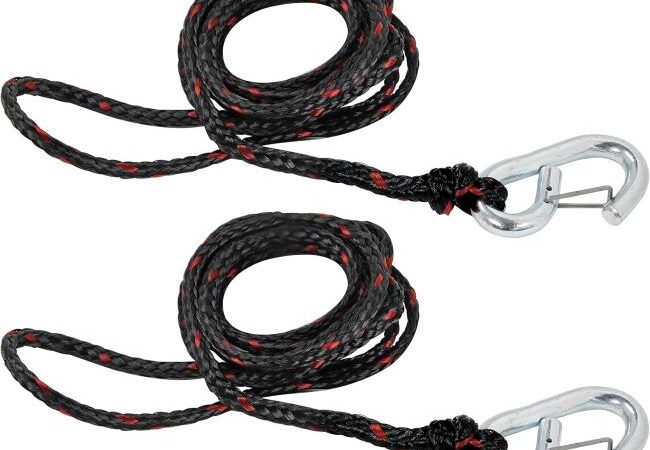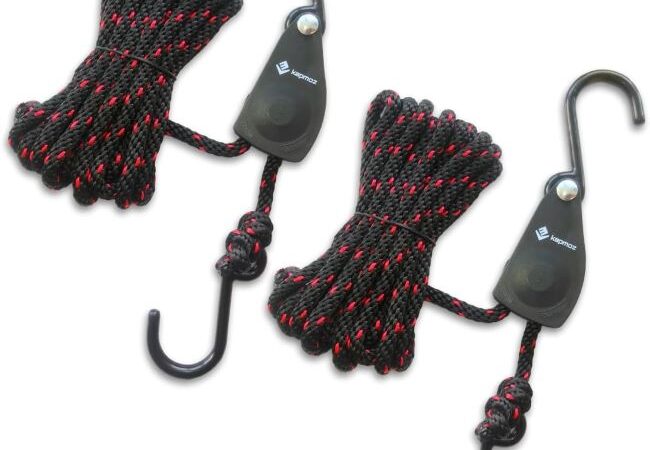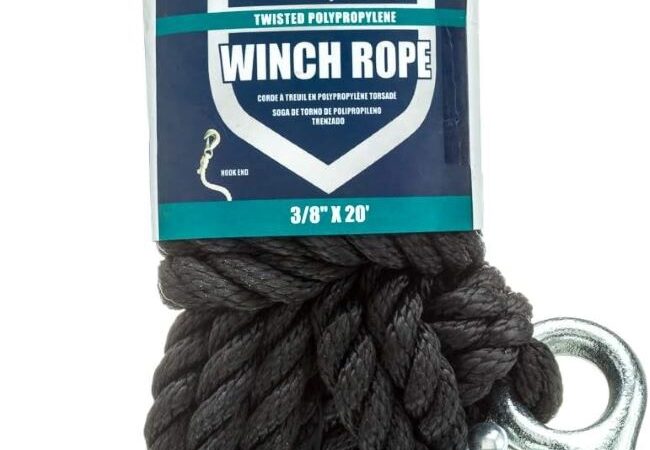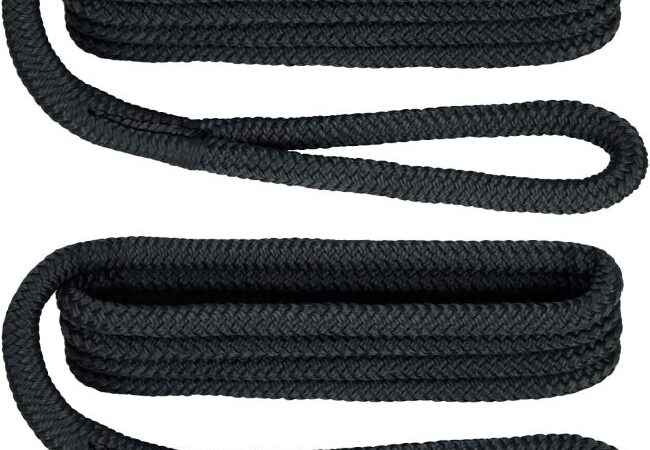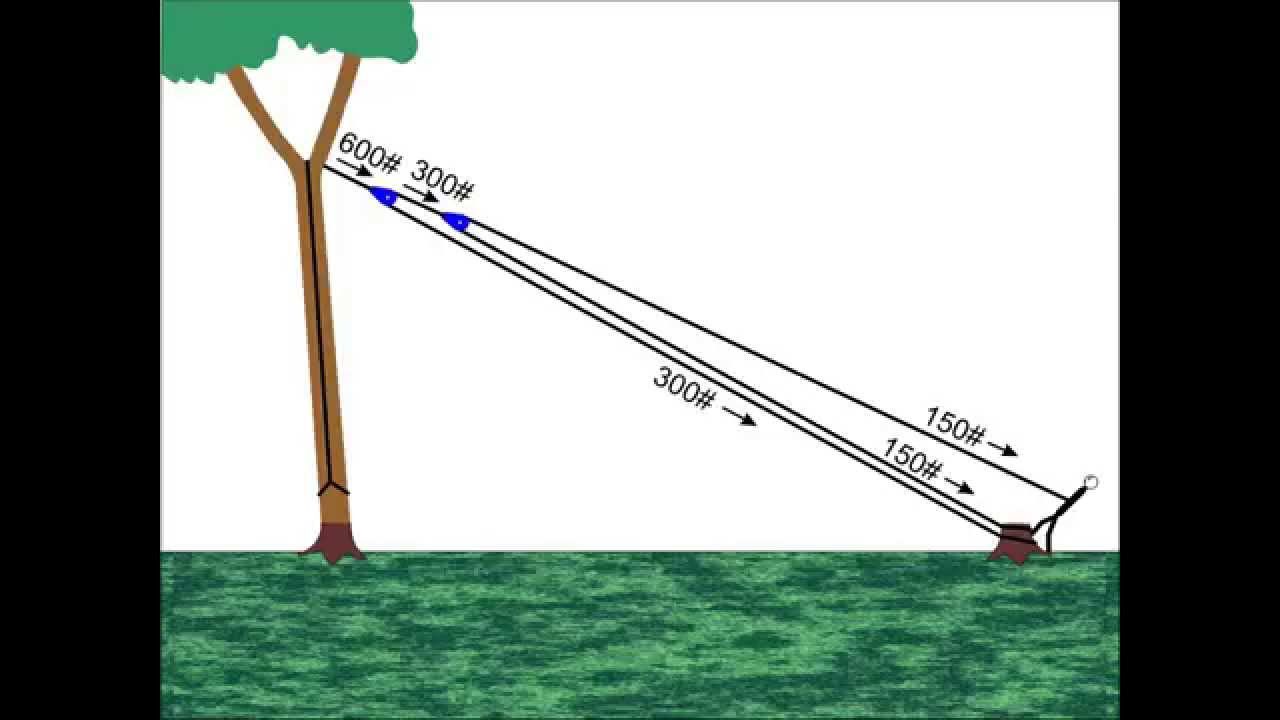
Rope for Cutting Trees: Essential Gear for Arborists
A rope saw is an essential tool for safely cutting high branches. It allows for tree trimming without the use of a ladder.
Contents at a Glance
ToggleCutting trees, especially those with high branches, requires specialized tools for safety and efficiency. One such tool is the rope saw, designed to cut limbs that are out of reach from the ground. This tool consists of a long chain or wire with cutting teeth, connected to ropes on either end.
By throwing the rope over the branch and pulling alternately on each side, homeowners and professionals alike can cut through wood without climbing. It’s a practical solution for maintaining trees and managing overgrowth, ensuring that the task is completed with minimal risk. The use of a rope saw not only reduces the potential for accidents but also helps preserve the health of the tree by enabling precise cuts from a distance.
Essential Arborist Gear: The Role Of Rope
Ropes are vital for arborists. They provide safety and support during tree cutting. High-quality ropes can mean the difference between a job well done and a risky situation. Let’s explore the types and properties of ropes that keep arborists secure in the treetops.
Types Of Rope Used In Tree Work
Arborists choose ropes based on the task at hand. Each type offers unique benefits.
- Climbing Ropes – Lightweight and flexible, ideal for moving up and down the tree.
- Rigging Ropes – Strong and durable, used for lowering heavy branches safely to the ground.
- Static Ropes – Minimal stretch, providing stability for more precise work.
- Dynamic Ropes – More stretch, absorbing shock from sudden loads.
Properties Of Arborist Ropes
The properties of ropes ensure that arborists can work safely.
| Property | Description |
|---|---|
| Strength | Can handle heavy loads and stress. |
| Durability | Resists wear and tear from rough bark and equipment. |
| Flexibility | Makes knots easy to tie and untie. |
| Elasticity | Absorbs shocks and reduces risk of snapping. |
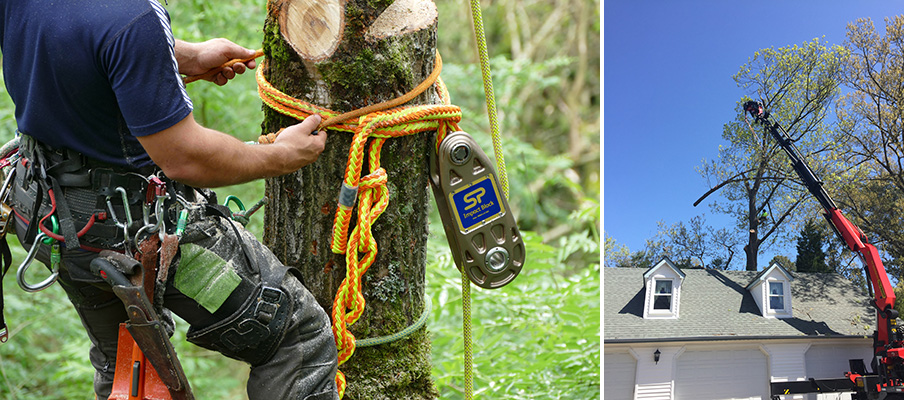
Credit: www.straightpoint.com
Rope Selection Criteria
Choosing the right rope for cutting trees is crucial. The right rope ensures safety and efficiency. Consider these factors when selecting a rope.
Strength And Durability
Ropes must withstand heavy loads and frequent use. Look for ropes with a high tensile strength rating. This means they can handle the weight of tree limbs without breaking.
Materials like polyester and nylon offer excellent durability. They resist wear and tear well. A double braid rope is often preferred for its strong outer layer.
Flexibility And Knotability
Flexible ropes make tying knots easier. Knots are necessary for securing ropes to tree limbs and gear. Good knotability ensures knots hold firmly and release when needed.
Look for ropes with a balanced twist. They should be neither too stiff nor too limp. A rope that is easy to handle saves time and effort.
Resistance To Environmental Factors
Tree cutting ropes face sun, rain, and chemicals. Choose ropes with UV resistance. This prevents weakening from sunlight exposure.
Water-resistant ropes avoid becoming heavier and harder to manage in wet conditions. They also prevent rot and mildew growth. Ropes with a protective coating resist harmful chemicals from tree sap and other sources.
Climbing Ropes: The Arborist’s Lifeline
For arborists, climbing ropes are not just tools; they are lifelines. The right rope can mean the difference between a safe climb and a perilous situation. Understanding the types of ropes and how to choose the perfect one is crucial for any tree cutting job. Let’s explore the world of climbing ropes designed for arborists.
Dynamic Vs. Static Ropes
There are two main types of climbing ropes: dynamic and static. Dynamic ropes are designed to stretch, absorbing the energy of a fall. This stretch also provides a softer landing if an arborist slips. On the other hand, static ropes have very little stretch, making them ideal for tasks where you need to stay in place without much movement.
| Dynamic Ropes | Static Ropes |
|---|---|
| Stretch to absorb fall impact | Minimal stretch for stability |
| Softer landings | Better for stationary work |
Choosing The Right Climbing Rope
When selecting a climbing rope, consider the job at hand. Length, diameter, and rope type all play a role in your safety and efficiency. A longer rope is needed for tall trees, while a thicker diameter ensures durability and a better grip. Below is a checklist to help choose the right climbing rope.
- Assess the tree’s height for rope length.
- Choose thicker ropes for a stronger grip.
- Opt for a static rope for rigging and work positioning.
- Select a dynamic rope for climbing where falls may occur.
- Check the rope’s safety ratings and certifications.
- Ensure compatibility with other climbing gear.
Rigging Ropes: Managing Heavy Loads
Rigging ropes play a crucial role in safely managing heavy loads during tree cutting operations. These ropes ensure that large limbs and sections of trees can be securely controlled and removed without causing damage or injury.
Rigging Rope Qualities
Choosing the right rigging rope is vital for safety and efficiency. Here are key qualities to look for:
- Durability: Ropes must withstand harsh conditions and heavy loads.
- Flexibility: This allows for easy knotting and handling.
- Strength: High tensile strength is essential for supporting large weights.
- Abrasion Resistance: Ropes should resist wear and tear from rough surfaces.
Techniques For Safe Rigging
Implementing proper techniques is as important as using high-quality rigging ropes. Follow these steps for safe rigging:
- Inspect Ropes: Always check for signs of wear or damage before use.
- Use Appropriate Knots: Select knots that securely hold under load yet are easy to untie.
- Maintain Clear Areas: Ensure the drop zone is clear of people and hazards.
- Communicate Clearly: Use hand signals or radios to maintain good communication with your team.
Rope Maintenance And Care
Proper rope care is vital for safety during tree cutting. A well-maintained rope ensures efficient work. Learn how to keep your ropes strong and reliable below.
Regular Inspection And Cleaning
Inspect ropes before and after each use. Look for frays, cuts, or signs of wear. Dirt can damage fibers so clean your ropes regularly. Use mild soap and water for cleaning. Air-dry ropes away from direct sunlight.
Proper Storage Practices
Store ropes in a cool, dry place. Avoid places with chemicals, fumes, or rodents. Coiling ropes helps prevent kinks and tangles. Use rope bags or hang ropes in large loops for best storage.
| Tip | Description |
|---|---|
| Inspection | Check for damage before/after use |
| Cleaning | Use mild soap and water |
| Drying | Air-dry away from sunlight |
| Storage | Keep in a dry place, coil properly |
- Avoid storing ropes in damp or hot areas.
- Check for pests that can damage ropes.
- Keep ropes away from sharp objects.
Innovations In Arborist Ropes
Professionals in tree care know the importance of reliable gear. Cutting trees requires precision, safety, and efficiency. With innovations in arborist ropes, these tasks become safer and more effective. Let’s explore the latest advancements in the world of arborist ropes and how they benefit tree professionals.
Advancements In Rope Technology
The arboriculture industry has seen remarkable progress in rope technology. New materials and designs offer improved strength and flexibility. These advancements include:
- Enhanced durability against rough tree bark
- Increased tensile strength for heavy loads
- Lightweight cores for better maneuverability
Advances in fibers like HMPE (High Modulus Polyethylene) and coated polyester result in ropes that resist wear and tear much longer than traditional options.
Eco-friendly Rope Materials
With a growing focus on sustainability, the development of eco-friendly ropes has become a priority. Arborists can now choose ropes that:
- Are made from recycled materials
- Reduce environmental impact during production
- Biodegrade more quickly after disposal
These eco-friendly ropes do not compromise on performance. They provide strength and durability needed for cutting and maintaining trees safely.
Safety First: Rope Use Best Practices
Safety First: Rope Use Best Practices is essential when cutting trees. Ropes help control the direction of a tree’s fall and manage limbs. However, incorrect use can lead to accidents. Let’s explore how to use ropes safely.
Understanding Load Limits
Every rope has a load limit, which is the maximum weight it can handle. Exceeding this limit can cause the rope to break. It’s crucial to know the weight of what you’re lifting or pulling.
- Check the rope’s label for its load capacity.
- Use a rope that can handle more weight than you expect to need.
- Regularly inspect ropes for wear and tear.
Avoiding Common Mistakes
Many accidents happen due to simple errors. Here are tips to avoid common rope-related mistakes:
- Never use a damaged rope. Even small frays can weaken it significantly.
- Avoid knotting the rope as knots can reduce its strength.
- Ensure ropes are stored dry and away from sunlight.
Remember, safety always comes first. Using ropes correctly can prevent serious injuries.

Credit: m.youtube.com
Advanced Rope Techniques For Arborists
Arborists climb and care for trees using ropes. They use advanced techniques. These methods keep both arborists and trees safe. Let’s explore some advanced rope techniques for arborists.
Srt And Drt Climbing Methods
Single Rope Technique (SRT) and Double Rope Technique (DRT) are two main climbing methods. Arborists choose based on the tree and task.
- SRT uses one rope. It is fixed at a high point. Climbers ascend and descend on the same line. It’s efficient for tall trees.
- DRT, or doubled rope, uses a rope looped over a branch. This creates two lines. Climbers move with friction hitches. It’s good for control.
Arborists must know these methods. They must use them safely. Proper training is key.
Complex Rigging Setups
Rigging setups help remove branches. They use ropes, pulleys, and other gear. These systems control the fall of cut limbs.
| Equipment | Use |
|---|---|
| Ropes | Support branches |
| Pulleys | Direct ropes |
| Friction Devices | Control descent |
Complex rigging protects property. It prevents damage. Teams must plan. Communication is important.
Case Studies: Rope In Action
Ropes play a crucial role in tree cutting operations. To understand their importance, let’s delve into real-world situations and lessons from experienced professionals.
Real-life Scenarios
In the world of arboriculture, ropes aren’t just accessories; they’re lifesavers. Here are tales from the treetops:
- Oak Overhaul: A team tackled a massive oak with precision. They used a dynamic rope to lower hefty branches safely.
- Pine Precision: Climbers scaled a tall pine, relying on static ropes for stability and control during their ascent and descent.
- Storm Aftermath: After a storm, a crew used rigging ropes to remove a tree leaning dangerously over a house.
Lessons Learned From The Field
Seasoned tree cutters have shared their wisdom. Here’s what we’ve gleaned:
- Choose the right rope: Matching rope type to the job is key for safety and efficiency.
- Regular inspections: Always check ropes for wear and tear to prevent accidents.
- Proper technique: Correct knotting and rigging methods ensure success and safety.
Each story underscores the rope’s value in tree cutting. Professionals trust their ropes to protect lives and property.

Credit: www.amazon.com
Frequently Asked Questions
What Kind Of Rope Is Used In Tree Cutting?
Arborists typically use static ropes designed for tree cutting due to their low stretch and high durability. These ropes ensure safety and efficiency during tree removal tasks.
What Is The Best Rope For Taking Down Trees?
The best rope for tree removal is a static arborist climbing rope, known for its strength and durability.
What Is Tree Rope Called?
A tree rope is commonly referred to as a “rigging rope” or “climbing rope” in arboriculture and recreational climbing.
What Is The Best Rope For Pulling Logs?
The best rope for pulling logs is a polyester or polypropylene rope due to its strength, durability, and resistance to abrasion.
Conclusion
Selecting the right rope for cutting trees is crucial for safety and efficiency. Opt for durability, flexibility, and strength in your choice. Remember, the best rope minimizes effort and maximizes performance. Equip yourself wisely to tackle tree-cutting tasks with confidence and ease.
Choose the right rope and enhance your tree-cutting experience.

